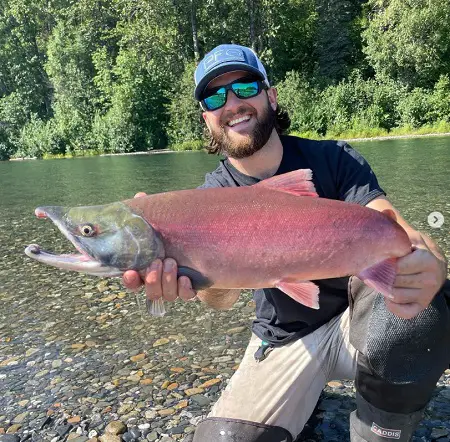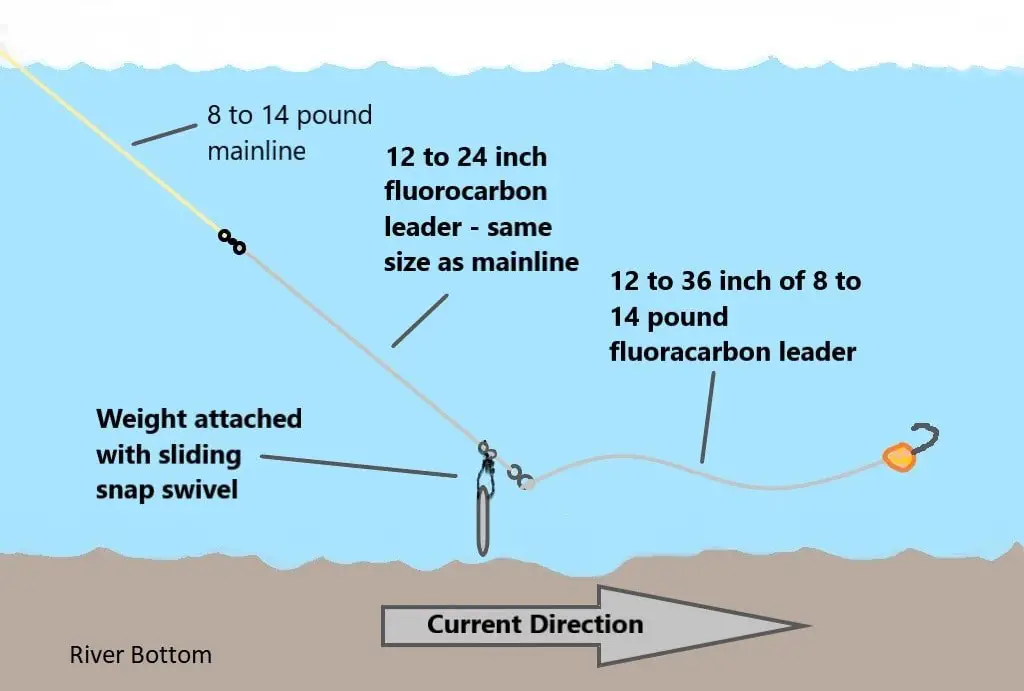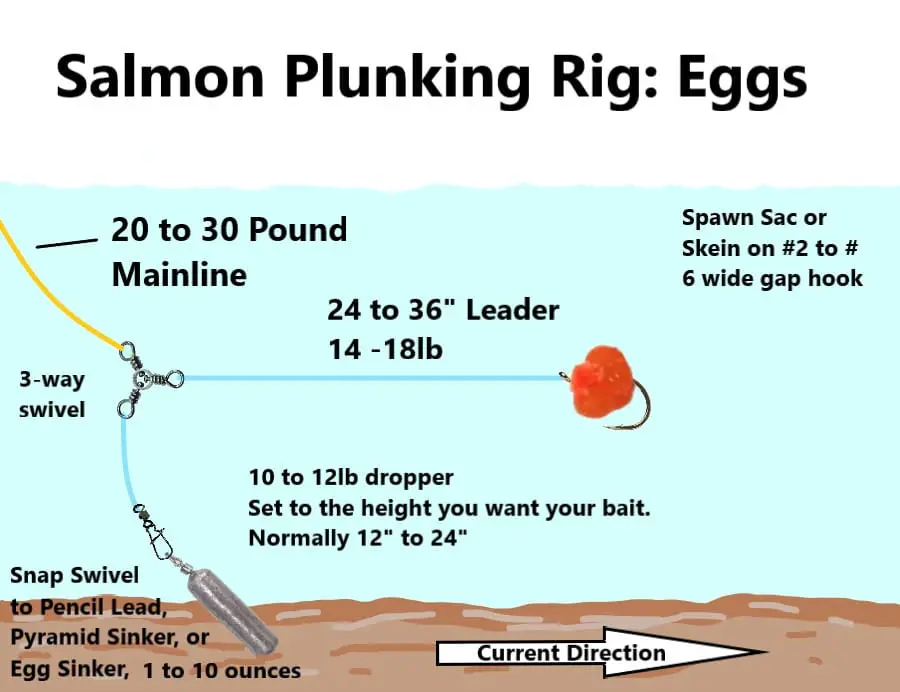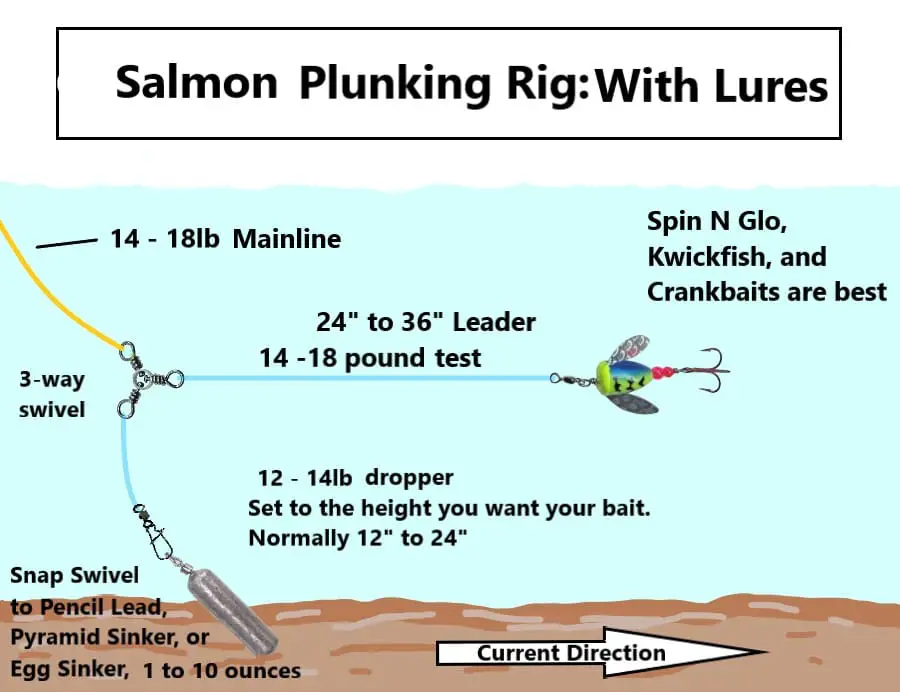Salmon Fishing With Shrimp: A Guides Perspective

Salmon fishing with shrimp can be very effective, especially if you know how to prepare, rig, and the most effective methods to fish.
As a salmon river guide for over 20 years, I’ve experimented with various bait options commonly used for salmon fish and some less common baits.
Salmon fishing with shrimp is a lesser-known bait that deserves attention.
I’ve achieved great success with shrimp when targeting steelhead and trout, so it made me wonder if shrimp could be just as effective for salmon fishing.
As a guide who spends around 300 days a year on the water, I’ve had ample opportunities to test different shrimp types under various conditions and during different stages of the salmon runs.
So do salmon eat shrimp, and is salmon fishing with shrimp something you should consider? Let’s find out.
In their natural habitat, salmon frequently pursue small aquatic creatures like shrimp. Therefore, it’s reasonable to assume that they would readily take a well-presented shrimp as they migrate up a river to spawn.
There are different types of shrimp that I tested out for salmon fishing.
Salmon Fishing With Shrimp
Shrimp are commonly recognized as small aquatic creatures, and based on my tests, they are indeed effective as bait for salmon fishing. Some anglers enhance their effectiveness by adding colors, scents, or attractants to the shrimp.
Anglers will dye their shrimp, usually red, or hot orange, but other colors like pink are good colors.
Some anglers even use shrimp in combination with beads or other baits, which I do with good results.
Please ensure that the regulations in your area permit using shrimp as bait and that you are permitted to use two or more baits.
Do Shrimp Truly Work as Bait for Salmon Fishing?
Through various experiments, I’ve tested different shrimp and used different rigging techniques. I’ve used preserved shrimp, including salted and vacuum-packed options. Popular shrimp for Salmon bait are:
- Coon Shrimp
- Stripped Shrimp
- Sand Shrimp
- Salad Shrimp – Yes, the kind you eat.
Surprisingly, I’ve caught salmon using all of these types of shrimp as bait. I’ve conducted numerous tests in different conditions and found shrimp to be effective for both wild and stocked salmon in all conditions and at all stages of the salmon run.
Shrimp are a great choice when targeting Sockeye Salmon, Coho, and even Spring and Summer Chinook.
Often, the type of shrimp doesn’t make a huge difference, especially in faster currents where salmon need to make a split decision to eat it or not.
However, before you dismiss other bait options and solely rely on shrimp, consider some essential factors.
Salmon are opportunistic feeders and often strike at a range of baits, including non-food items like Powerbait Dough. If they are willing to eat that kind of stuff, natural baits like shrimp will also trigger a strike response in salmon.
Moreover, when an object drifts near a salmon in fast currents, the fish may instinctively grab it due to its limited time to inspect the bait, and since shrimp are relatively big, it’s easy for the salmon to spot the shrimp. The added colors also help salmon see the shrimp.
In slower or stagnant water bodies where salmon have ample time to inspect the bait, the effectiveness of shrimp is not as good, however, it can still work.
How To Cure Shrimp
Properly cured and dyed shrimp can make a big difference for keeping the shrimp on the hook, storing shrimp longer, and enticing the salmon to eat it.
Many anglers find the process of curing their own shrimp confusing, but fortunately, plenty of ready-to-use cures like Pro Cure or Pautzke and brines are available that make it simple to get consistent batch every time.
If you’ve ever cured salmon roe, you can easily cure shrimp using similar techniques. Most commercial egg cures work great for all types of shrimp as well.
Here’s what you’ll need:
- Pro-Cure Egg Cure (original double red hot stuff) or Pautzke Fire Dye.
- Frozen Shrimp (ensure good quality)
- Rock Salt
- Freezer bag
- Pro-Cure Slam-ola powder
- Scents like Pautzke Fire Power (krill powder), or the Super Dipping Sauce line
- Optional (salt and sugar)
How to Cure Shrimp:
Step 1: Fill a freezer bag or a 1 quart plastic/glass container (with a lid) with approximately 3 inches of shrimp or 1-third full.
Step 2: Add enough cure to thoroughly cover the shrimp (start with around 1/2 cup of cure). (optional: add a couple tables spoons of Rock Salt or Sea Salt, and or, 2 table spoons of sugar)
Step 3: Add one teaspoon of Slam-ola Powder. Shake it all up gently. Then cover the shrimp with more Pro-Cure (and another tablespoon or two of salt and sugar). The addition of rock salt provides a more durable bait if you are side drifting or using shrimp as a tail on lures.
Step 4: Refrigerate for a minimum of overnight. For optimal results, let them cure for 3 days.
Step 5: After 3 days of curing, add 1 cup of rock salt or sea salt. This step is optional but recommended as it will toughen up your shrimp. The addition of rock salt provides a more durable bait.
That’s it! You now have cured shrimp ready for fishing. Feel free to experiment with different scents to enhance their attractiveness. Remember, the longer you let the shrimp cure, the better the results.
Rigging Shrimp for Salmon Fishing
I generally use a size 6 or 8 Raven Specimen or Gamakatsu hook and hook the shrimp once in the head area.
Methods for Fishing Salmon with Shrimp
Shrimp can be used as a tail or trailer on lures when side drifting. Shrimp can also be used to drift in the same way you would drift spawn.
There are several effective methods that I use when salmon fishing with shrimp.
Bottom Fishing For Salmon With Shrimp


When using the stationary rig known as the bottom rig or plunking rig, cast your line and allow the bait to sink to the riverbed or bottom of the area you’re fishing.

Maintain a slightly slack line to give the salmon an opportunity to swim with the bait. Keep a close eye on your rod tip and the line. If you notice any movement or the line starts to pull out, it’s likely a bite. In such cases, close the bail and set the hook firmly.
Use a floating bead about 12 inches from the shrimp to keep the shrimp off the bottom, and I often use a leader about 30 inches.
Plunking and Side Drifting
When plunking for salmon, you can add shrimp to a bare hook, or add shrimp to a Spin-N-Glo, or rather crankbait or plug.
When it comes to using plugs and shrimp combos, whether you are side drifting or plunking, use lures like a Spin-N-Glo, a Maglip 3.5, Hot Shots, Brad’s Wigglers, or the Storm Wigglers. These all work well with shrimp attached to the belly hook of the plug. The belly hook is best.
Keep in mind that hooking the shrimp straight to the hook will cause the head of the shrimp to break off in about 15 minutes when nusing wobble-type lures like the Maglip.
Ensuring Longer Usage: Wrapping it Up
If you want to extend the lifespan of your bait and prevent the head from falling off, try Miracle Thread to wrap around the head where it connects to the body. Then, I continue wrapping towards the eyeballs and back towards the body.
To secure it, I tie a couple of half-hitches and tie off the thread. By doing this, your shrimp will last a long time.
Float Fishing With Shrimp
Float fishing is often an incredibly effective method for fishing with shrimp in rivers.
When fishing in still or deep water, use a slip float to facilitate easy casting and achieve the optimal depth.
A stationary float is my preferred choice in rivers or water less than 12 feet deep. Instead of using round bobbers, opt for pencil-style or thin-style floats like the Raven FM float, which is highly regarded by many experienced guides and anglers.
Let the shrimp drift slowly down the river with the current. I try to keep the shrimp about 2 feet off the river bottom.
Advanced Tips and Techniques For Catching Salmon With Shrimp
To increase your salmon catch rates when using shrimp, consider the following tips:
- Proper Hook Baiting: Always thread the hook through the shrimp in a way that ensures the hook point is exposed. This significantly improves your chances of a successful hookset when the salmon strikes.
- Reducing Line Visibility: Salmon have sharp vision and can detect fishing leaders, especially thicker ones. Opt for a fluorocarbon leader around 12 to 16 pounds, as it is less visible underwater and can improve your success rate. You may need to increase or decrease your leader size depending on the type of water you fish.
- Weather Considerations: Salmon tend to be more active during overcast weather, early mornings, or late evenings. Fishing during these periods can increase your chances of success.
- Fishing at the Correct Depth: Salmon typically swim about 1 to 3 feet from the riverbed. Position your bait at this depth to attract salmon. Using a floating bead to suspend the shrimp off the river bottom at the right height can be effective.
- Adding Scent: Some anglers enhance the attractiveness of their bait by incorporating commercially available scents or substances like garlic oil.
- Fish With A Bead Combination: I will peg a colorful hard or soft bead 2 to 4 inches up the line. This can attract the salmon and get more bites. At times, I’ll even put the bead touching the hook.
- Use Quality Hooks: A salmon hook is different from a hook for trout or other species. The best hooks for salmon will be extra strong, sharp, and a short shank wide gape hook is always best.
Comparing Shrimp to Other Salmon Baits
While shrimp have their place in the salmon bait scene, they may not match up to other baits in terms of success rates when float fishing or drift fishing.
Although some anglers swear by shrimp, it’s challenging to determine if they yield equal or better results compared to proven baits like spawn bags or skein when float fishing.
Are Shrimp Good or Bad for Salmon Fishing? The Verdict
Based on my personal experience, I wouldn’t solely rely on shrimp as the primary bait for salmon fishing, particularly when guiding clients. However, there have been instances where shrimp have proven to be effective and saved the day. Adding shrimp to your plugs is likely better than not having the shrimp on them.
The drawback of using shrimp is the effort involved in acquiring, storing, and curing them.
Should You Use Shrimp for Salmon Fishing?
In my view, shrimp can be a viable additional bait option when other, more reliable baits are not producing the desired results.
However, I wouldn’t recommend them as the primary choice. It’s always advisable to use baits that have a high success rate and are trusted by professional guides.
Do Salmon Guides Use Shrimp?
I do know other salmon guides that use shrimp and they find it very effective. Maybe some other salmon guides will comment below on their experiences with shrimp for salmon fishing.
See Other Cure Recipies to consider.
Salmon Fishing with Shrimp: Q&A
If you have any questions, insights, or advice regarding salmon fishing with shrimp, feel free to share them in the comments section below.
Tight Lines,
Graham
